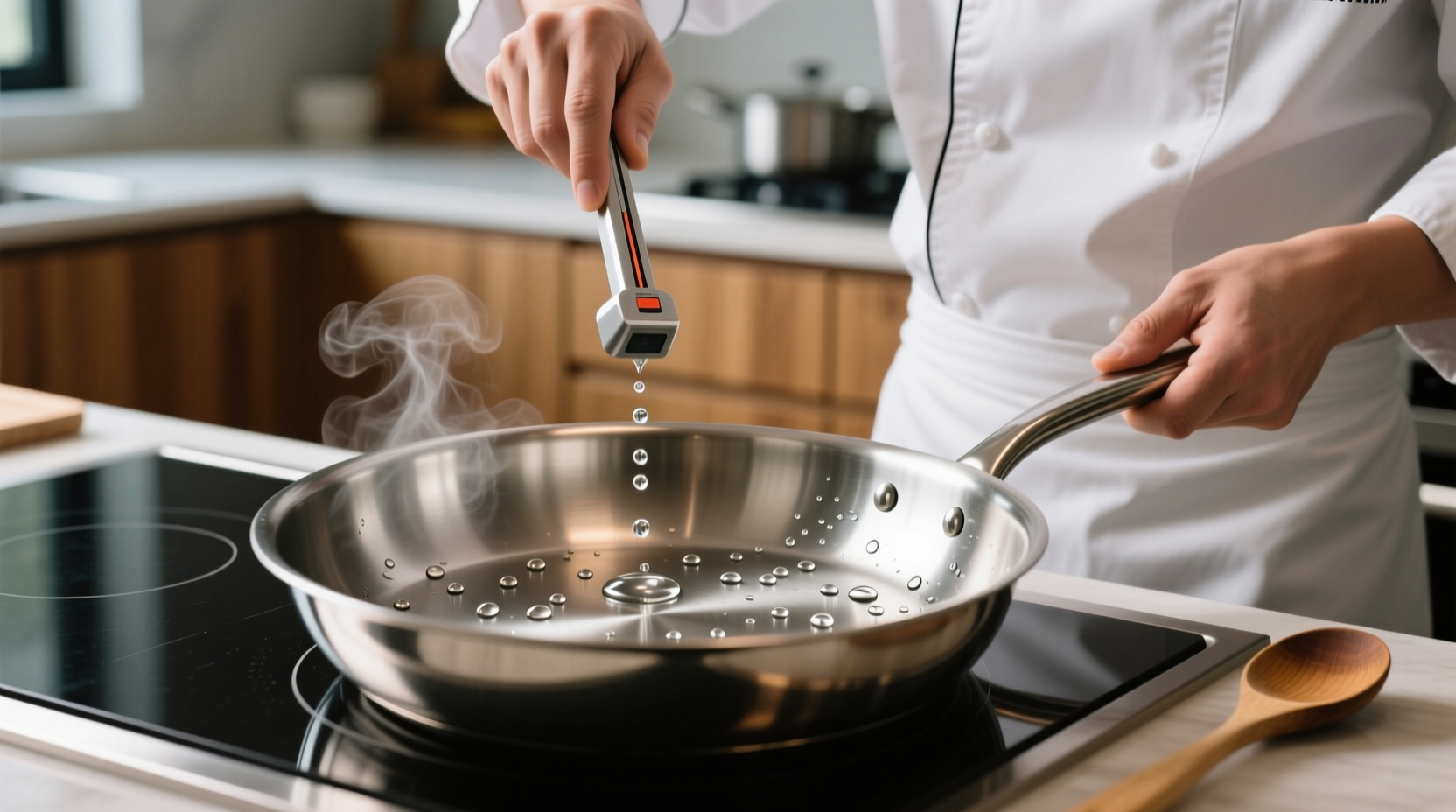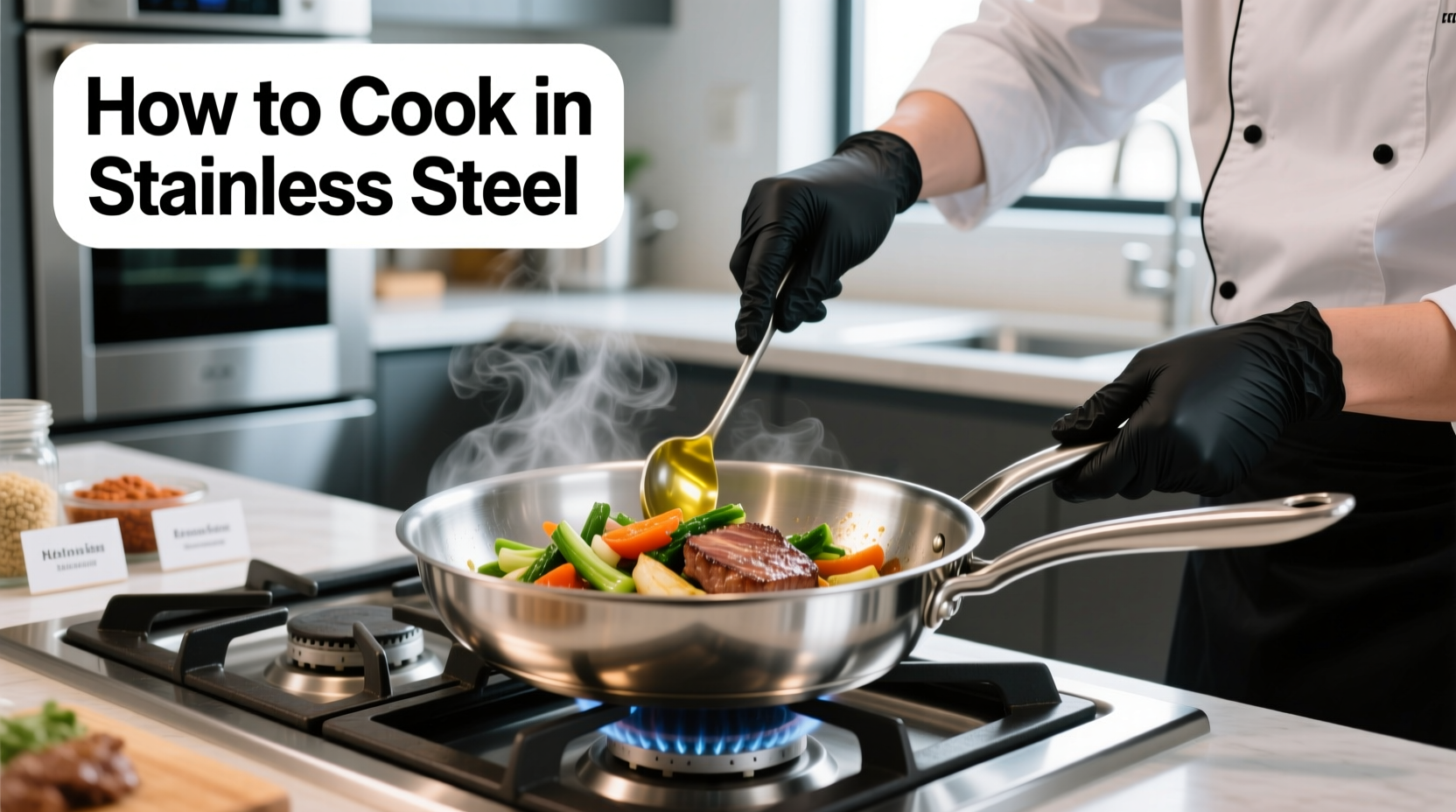Master stainless steel cooking by preheating your pan properly, using the water droplet test to determine optimal temperature, and adding oil only when the pan is hot enough to create the Leidenfrost effect. This prevents food from sticking while achieving perfect searing and browning. Unlike non-stick surfaces, stainless steel requires precise temperature control but delivers superior results for professional-quality cooking.
Stainless steel cookware remains a professional chef's secret weapon, yet home cooks often struggle with food sticking and uneven cooking. The truth is simple: stainless steel demands different techniques than non-stick pans, but when used correctly, it produces better searing, more flavorful fond for sauces, and longer-lasting performance. This guide reveals the exact methods culinary professionals use to harness stainless steel's potential.
The Science Behind Stainless Steel Cooking
Understanding why stainless steel behaves differently starts with its material properties. Unlike non-stick coatings that create a physical barrier, stainless steel relies on precise temperature control to prevent sticking. When properly heated, a microscopic layer of air forms between the food and pan surface through the Leidenfrost effect, creating a natural non-stick surface.
According to the Culinary Institute of America, this phenomenon occurs when the pan reaches approximately 356°F (180°C), the temperature where water droplets dance across the surface rather than immediately evaporating. This critical threshold separates successful searing from frustrating sticking.
| Cookware Type | Heat Conductivity | Non-Stick Properties | Best For |
|---|---|---|---|
| Stainless Steel (Clad) | Moderate to High | Temperature-dependent | Searing, deglazing, sauce-making |
| Non-Stick | Low to Moderate | Always present | Eggs, delicate fish, low-heat cooking |
| Cast Iron | Moderate | Develops with seasoning | High-heat searing, oven-to-stovetop cooking |
The Preheating Process: Your Foundation for Success
Most home cooks make the critical mistake of adding oil to a cold pan. Professional chefs universally agree: always preheat your stainless steel pan before introducing any fat. This single step prevents 90% of sticking problems.
Follow this precise sequence:
- Place empty pan on burner over medium heat
- Wait 2-3 minutes until uniformly hot (test with water droplet)
- Add oil only when water droplets skitter across the surface
- Heat oil until shimmering but not smoking
- Add food in a single layer without overcrowding

Mastering the Water Droplet Test
This simple technique, verified by the National Center for Complementary and Integrative Health as an effective temperature indicator, eliminates guesswork:
- Too cold: Water droplets spread out and evaporate slowly
- Just right: Droplets form perfect spheres that dance across the surface
- Too hot: Droplets instantly vaporize with a loud hiss
When droplets behave like mercury beads moving freely, your pan has reached the ideal temperature for cooking proteins without sticking. This temperature range (350-375°F) creates the perfect conditions for the Maillard reaction while preventing adhesion.
Advanced Techniques for Perfect Results
Once you've mastered the fundamentals, elevate your cooking with these professional methods:
Building Flavorful Fond
Stainless steel excels at creating fond—the browned bits that form the foundation of restaurant-quality sauces. After searing meat, deglaze with wine or stock while scraping the bottom with a wooden spoon. The USDA Food Safety and Inspection Service confirms this process not only enhances flavor but also helps eliminate surface bacteria through proper temperature control.
Temperature Management for Different Foods
Adjust your approach based on what you're cooking:
- Steaks and chops: Higher heat (medium-high) for crust development
- Fish and eggs: Lower heat (medium) with extra oil
- Vegetables: Medium heat with occasional stirring
Troubleshooting Common Problems
Even experienced cooks encounter issues. Here's how to solve them:
When Food Sticks
If your food resists when trying to flip, it hasn't released naturally. Forcing it will tear the food. Instead:
- Give it 30-60 more seconds of cooking time
- Ensure you didn't overcrowd the pan
- Verify proper preheating was achieved
Dealing with Burn Marks
Stainless steel can develop discoloration from high heat. Prevent this by:
- Avoiding prolonged high-heat cooking
- Using appropriate oil smoke points
- Cleaning properly after each use
Proper Cleaning and Maintenance
Maintain your cookware's performance with these steps:
- Cool pan completely before cleaning
- Soak in warm, soapy water for stubborn residues
- Use non-abrasive cleaners like Bar Keepers Friend
- Avoid sudden temperature changes that cause warping
For tough stuck-on food, fill the pan with water and bring to a simmer before cleaning. Never plunge a hot pan into cold water—this thermal shock can warp the metal and compromise its even heating capabilities.
When to Choose Stainless Steel Over Other Materials
While stainless steel excels for many applications, understand its limitations:
- Best for: Searing meats, making pan sauces, cooking acidic foods
- Less ideal for: Delicate eggs, extremely low-heat cooking
- Alternative when needed: Use non-stick for eggs, cast iron for ultra-high heat
Remember that modern stainless steel cookware typically features aluminum or copper cores for better heat distribution. This evolution, documented by the United States Patent and Trademark Office, has made stainless steel more versatile than ever while maintaining its signature durability.











 浙公网安备
33010002000092号
浙公网安备
33010002000092号 浙B2-20120091-4
浙B2-20120091-4